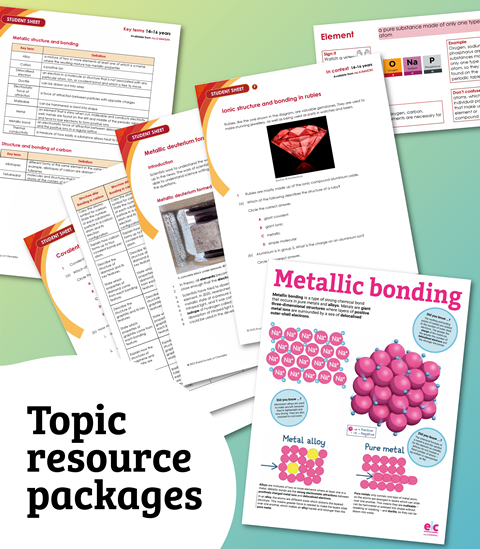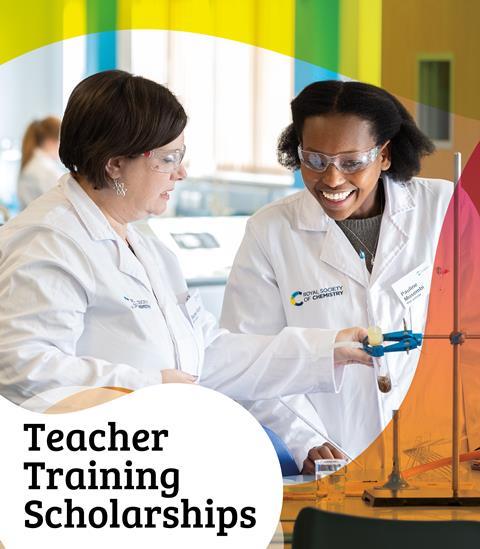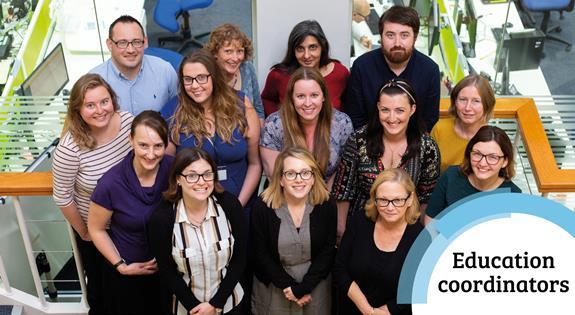All Properties of matter articles – Page 18
-
 Resource
ResourceJust Add Water: Part 4
A series of fun, engaging, short chemistry demonstrations about water, taken from a lecture by Dr. Peter Wothers of the University of Cambridge. Video: Just Add Water: 32 - Cooking Eggs at Low Pressure Video: Just Add Water: 33 - Heating Oil ...
-
 Resource
ResourceJust Add Water: Part 3
A series of fun, engaging, short chemistry demonstrations about water, taken from a lecture by Dr. Peter Wothers of the University of Cambridge Video: Just Add Water: 22 - Structure of Water & Ice Video: Just Add Water: 23 - Charges in Water ...
-
 Resource
ResourceJust Add Water: Part 1
A series of fun, engaging, short chemistry demonstrations about water, taken from a lecture by Dr. Peter Wothers of the University of Cambridge. Video: Just Add Water: 01 - Many Things Contain Water Video: Just Add Water: 02 - Copper Sulphate ...
-
 Resource
ResourceFire and Flame: Part 4
A series of short video clips of explosive and exciting chemical reactions, taken from a lecture called “Fire and Flame” by Dr. Peter Wothers at the University of Cambridge. Video: Fire and Flame: 37 - Extinguishing Fire with Carbon Dioxide Video: Fire and Flame: ...
-
 Resource
ResourceFire and Flame: Part 1
A series of short video clips of explosive and exciting chemical reactions, taken from a lecture called “Fire and Flame” by Dr. Peter Wothers at the University of Cambridge. Video: Fire and Flame: 01 - Introduction Video: Fire and Flame: 02 - What ...
-
 Resource
ResourceThe alkali metals videos: part 2
More short, fun videos exploring the chemistry of the alkali metals
-
 Resource
ResourceTitanium Dioxide Photocatalysis: A New Kind of Water Treatment
Part of a series of resources investigating how using titanium dioxide as a photocatalyst can help to create cleaner water using sunlight.
-
 Resource
ResourceTitanium Dioxide Photocatalysis: Uses of Titanium Dioxide
Part of a series of resources investigating how using titanium dioxide as a photocatalyst can help to create cleaner water using sunlight.
-
 Resource
ResourceThe ups and downs of chemistry
Encourage learners to explore solubility and density in this experiment. Includes kit list and safety instructions.
-
 Resource
Resource‘Recycle shipwrecked cargo’ demands group
Recycle, reuse and rediscover with this shipwreck themed experiment. Includes kit list and safety instructions.
-
 Resource
ResourceIs the secretary guilty? | 14–16 years
In this practical, your learners become chemical detectives by carrying out an investigation using separation techniques
-
 Resource
ResourceFight fire! Fill up with foam | 11–14 years
How do firefighters do it? That’s the question your learners will explore in this investigation into carbon dioxide foam
-
 Resource
ResourceBigger and better bubbles
Perfect for young learners, or older, this experiment shows off the science of surface tension. Includes kit list and safety instructions.
-
 Class experiment
Class experimentSnap, crackle and snot
Investigate some of the weird and wonderful properties of solids, liquids and gases, in this range of experiments
-

-

-

-
 Resource
ResourceOn This Day – Jul 01 : Charles Goodyear died
He was the inventor of vulcanized rubber, a baked mixture of rubber and sulfur (S) that creates a strengthened compound. The process reinvented rubber as a useful substance that could withstand the variations of day-to-day temperatures. Rubber alone freezes in winter and melts in summer.
-
 Resource
ResourceOn This Day - Nov 10 : Ernst Otto Fischer was born
He was the co-recipient of the Nobel Prize in Chemistry in 1973 for determining the structure of ferrocene (Fe(C5H5)2), a single iron (Fe) atom sandwiched between two five-sided carbon rings. There are many analogues of ferrocene, which together have led to the rapid growth of organometallic chemistry.
-
 The Mole
The MoleBreaking Bad IV – can a little crystal blow up a room?
On screen chemistry with Jonathan Hare











